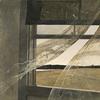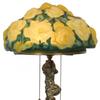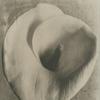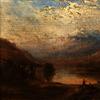'Electric Paris' Exhibition Lights Up Bruce Museum
- GREENWICH, Connecticut
- /
- May 19, 2016
Paris had been known as the City of Light long before the widespread use of gaslight and electricity. The name arose during the Enlightenment, when philosophers made Paris a center of ideas and of metaphorical illumination. By the mid-nineteenth century, the epithet became associated with the city’s adoption of artificial lighting: in the 1840s and 1850s, gas lamps were first widely installed, while electric versions began to proliferate by the end of the 1870s. Even as rivals, including Berlin, London, New York, and Chicago, increased the quantity of light in their rapidly electrified cities, Paris managed to maintain its reputation because of the beauty of its illuminations. Light remained and remains to this day a key signature of the French capital.
Electric Paris (May 14, 2016 - September 4, 2016) at the Bruce Museum in Greenwich, Conn., is the first exhibition to explore the ways in which artists responded to older oil and gas lamps and the newer electric lighting that began to supplant them around the turn of the twentieth century. While artificially illuminated public spaces and private interiors appear frequently in works of art and popular depictions of contemporary life during this period, the different types of lighting that animate such spaces – and their distinctive visual properties – have not been considered in detail.
Approximately 50 works – paintings, drawings, prints, and photographs – by such artists as Edgar Degas, Mary Cassatt, Pierre Bonnard, Édouard Vuillard, Henri de Toulouse-Lautrec, Jean Béraud, James Tissot, Charles Marville, Childe Hassam, Charles Courtney Curran, Alfred Maurer, and Maurice Prendergast, among others, are on view.
Each of the exhibition’s four sections – Nocturnes, Lamplit Interiors, Street Light, In and Out of the Spotlight – reveals the prominent role of artificial illumination in the art of the period and in the making and transformation of modern Paris. Whether nostalgic renderings of gaslit boulevards, starkly illuminated dance halls, or abstracted prisms of electric streetlamps, the works of art on view suggest the diverse ways in which Parisians experienced the city as it transitioned from old to new technologies.
Electric Paris at the Bruce Museum is curated by Margarita Karasoulas; it is an expanded version of an exhibition first organized by the Clark Art Institute in 2013, curated by S. Hollis Clayson, who is exhibition advisor to this exhibition.
On view at the same time as Electric Paris, the science galleries will sizzle with excitement with a show called Electricity. The show, developed by the Franklin Institute, brings the science and history of electricity to life through engaging, hands-on interactives. Visitors will learn the fundamental principles behind electricity such as magnetic fields, electric charges and battery technology.












